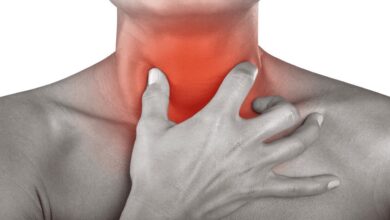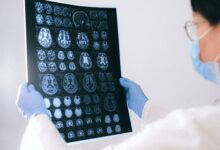
Certain preventive measures and treatments can be put in place to prevent the onset of back pain.
Discover them in this sheet.
Back pain prevention
It is difficult to give general prevention advice as the possible causes of back pain are numerous.
If it is a common back pain, without serious pathology, certain measures of hygiene of life and postures make it possible to limit the risk of occurrence and aggravation of pain.
See the fact sheet on low back pain and neck muscle disorders for more information. These tips are also valid for non-specific back pain.
Among these tips:
- maintain minimal physical activity;
- avoid prolonged bed rest;
- pull or push the loads rather than lifting them, maintain the alignment of the vertebrae (do not arch the back and bend the knees);
- adjust your workstation properly (in front of the computer, in particular);
- practice regular physical activity and an activity to relax the back (yoga, relaxation, etc.).
Back pain: effective treatments
The treatment of non-specific back pain is based on medication, if necessary at the time of painful crises, but above all on non-pharmacological measures (education, muscle building and flexibility exercises, massages, etc.).
Multidisciplinary programs combining pain management, education and counseling sessions, physical exercise and psychological support are the most effective.
In the vast majority of cases, back pain disappears within a few weeks. However, a certain proportion of them become chronic (about 7%). There is then, very often, a vicious circle: the more it hurts, the less the back is strained, the more the muscles weaken, the less they support the spine, and… the more it hurts.
Here is an overview of frequently recommended treatments and measures for non-specific acute and chronic pain.
pain medication
When the pain is intense, several drugs can relieve it, paracetamol (acetaminophen), an analgesic (painkiller) being recommended first. It is important to treat pain effectively as soon as it appears.
Acute back pain
The painkiller treatment can be followed for a few days and involves:
- paracetamol (1 g 3 or 4 times a day maximum) or a higher-level analgesic if the doctor deems it necessary (codeine, dextropropoxyphene, tramadol, dihydrocodeine, etc.);
- if necessary, the painkiller can be combined with a nonsteroidal anti-inflammatory drug (NSAID) and/or a muscle relaxant (benzodiazepine) if the pain is, at least in part, related to muscle contracture.
Chronic back pain
If the pain becomes chronic (more than 12 weeks), the doctor may prescribe analgesics as a “basic treatment”. Beware, however, of self-medication: painkillers and NSAIDs are not insignificant; nor should they be associated without medical advice.
In some cases, epidural infiltrations of corticosteroids may be proposed, especially during painful flare-ups associated with sciatica or cruralgia. They reduce inflammation.
Finally, tricyclic antidepressants have an anti-pain action and they can be prescribed against chronic low back pain, especially in case of associated depressive syndrome.
Exercises, physical manipulations and massage therapy
In case of back pain, bed rest is never recommended (except in the very painful acute phase, and no more than a few days in this case).
Indeed, many studies 13 have shown that prolonged bed rest tends to aggravate pain, by increasing stiffness, decreasing muscle strength but also by fueling fear and establishing an attitude of avoidance (the person has fear of pain, so she avoids potentially painful gestures, and these become even more so).
Osteopathy, physiotherapy (physiotherapy) and massage therapy are effective treatments for back pain, especially when it persists for more than two weeks.
Combining manipulations, bodybuilding exercises (paravertebral and abdominal muscles), exercise rehabilitation, and sometimes electrical stimulation, massage, heat, etc., these techniques make it possible to relax the muscles and improve posture, and prevent the return pain.
Psychotherapy and education
Certain psychotherapy approaches, such as mind-body approaches, can help break the vicious cycle of chronic pain.
In addition to reducing the intensity of pain, they help to better manage stress, learn to relax and have a more positive attitude. Cognitive-behavioral therapy is one of the most widely used approaches.
More specifically, some patient education programs specifically target chronic back pain (eg back schools).
These programs inform and educate people with back pain, to help them physically remobilize their back without fear, and to learn how to manage pain by adopting good postures and good “hygiene”. lumbar or cervical.
Surgical intervention
Few people with chronic back pain require surgery, but it may be offered for pain associated with sciatica or cruralgia, or for abnormalities or malformations accessible to surgery.








